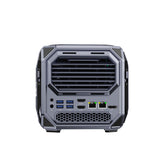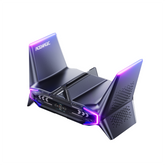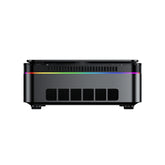Windows Vs Linux: An In-Depth Comparison of The Two Operating Systems

In the realm of personal computing and servers, Windows and Linux stand as two dominant operating systems, each with unique strengths and ideal use cases. This article compares them across multiple dimensions to help readers make informed decisions based on their needs.
1. User Interface and Ease of Use
Windows:
- Highly Mature and Unified Graphical User Interface (GUI)
- Intuitive Installation And Usage, Ideal For Average Users
- Excellent Hardware Compatibility And Plug-And-Play Support
- Includes a Wide Range of Built-In Drivers And Essential Software
Linux:
- Diverse Desktop Environments (GNOME, KDE, XFCE, etc.)
- Steeper Learning Curve, Especially Due To Reliance On The Command Line
- Recent Distributions (e.g., Ubuntu) Have Significantly Improved Usability
- May Require Manual Driver Configuration And Dependency Resolution
2. Performance And Resource Usage
Windows:
- Higher System Resource Consumption (especially newer versions)
- Suited For Modern Hardware Configurations
- Background Services May Impact Performance
Linux:
- Renowned for Efficiency And Lightweight Operation
- Highly Customizable, Adaptable To Both Old And High-End Hardware
- Exceptional Performance In Server Environments
- More Granular Control Over System Resources
3. Software Ecosystem
Windows:
- Most Comprehensive Support For Commercial Software (Especially In Professional Fields)
- Rich Gaming Ecosystem, With Mainstream Games Prioritizing Windows
- Professional Tools like Adobe Suite, AutoCAD, etc.
Linux:
- Vast Repository Of Open-Source Software, With Convenient Package Managers
- Native Support For Development Tools
- Can Run Some Windows Software Via Wine/Proton
- Limited Options For Proprietary Professional Software
4. Security And Stability
Windows:
- Primary Target For Malware Attacks
- Well-established Patch And Update Mechanisms
- Robust Recovery Tools After System Crashes
Linux:
- Stricter Permission Management And Superior Security Architecture
- Fewer Virus Threats
- Extremely Stable, Ideal For Long-Term Operation
- Transparent Code Auditing Due to Open-Source Nature
5. Cost Considerations
Windows:
- Requires Paid Commercial Licenses (Home, Pro, etc.)
- High Subscription Costs For Some Professional Software
Linux:
- Most Distributions Are Entirely Free
- Open-Source Software Has No Licensing Fees
- May Incur Higher Technical Support Costs
6. Recommended Use Cases
Choose Windows If:
- You Are a Casual Home/Office User
- You Need Specific Commercial Software (e.g., Office Suite)
- You Are a Gaming Enthusiast
- You Prefer an "Out-Of-The-Box" Experience
Choose Linux If:
- You are a developer or tech enthusiast.
- You Need To Run Servers Or Network Services
- You Value Privacy And System Control
- You Use Older Hardware Or Seek Peak Performance
Conclusion
There Is No "Best" System—Only The One That Best Suits Your Needs. In modern computing environments, many users opt for dual-boot or virtual machines to leverage the strengths of both. With the advent of WSL (Windows Subsystem for Linux), it's even possible to enjoy a near-native Linux experience within Windows.
You May Like:
Windows 11 Home vs Pro: What’s the Difference and Which One to Choose?







Leave a comment
Please note, comments need to be approved before they are published.